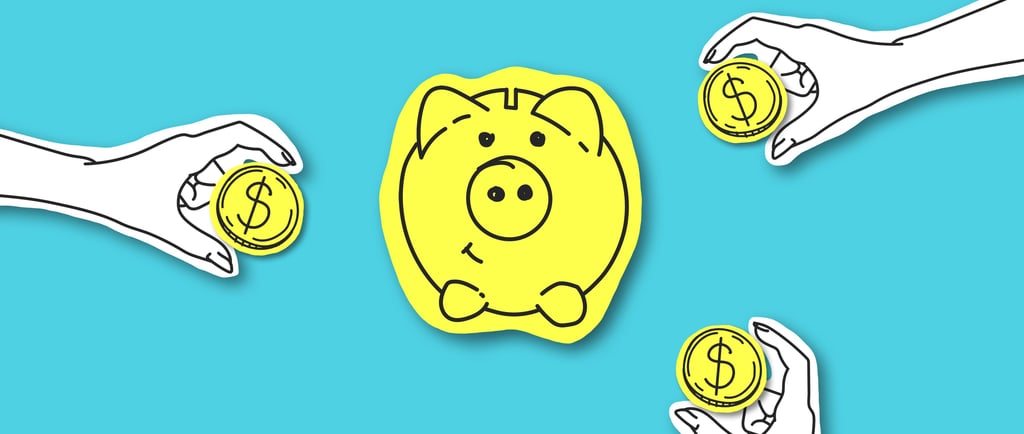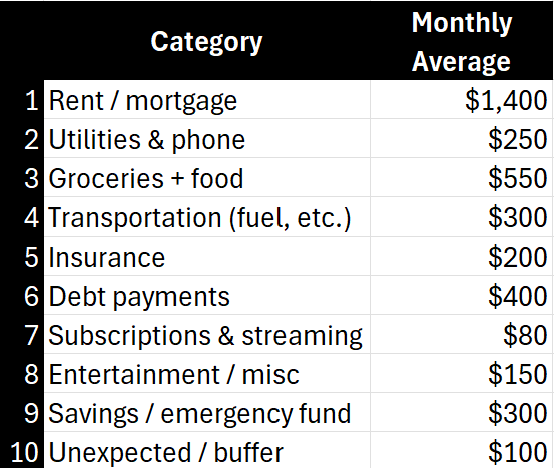Why Budgeting Matters — Especially Right Now
In an era of rising costs and unpredictable paychecks, mastering the art of budgeting isn’t just smart—it’s your financial safety net
Finistack
9/27/20254 min read


Even in “normal” times, households face pressure from rising costs; in 2025, U.S. inflation is hovering around 2.9 % annually (CPI). That means what cost you $100 a year ago now costs about $102.90 — not a huge jump, but over multiple expense categories it adds up.
At the same time, many households still struggle with irregular income or “financial surprises.” The Federal Reserve’s 2025 report found that 11 % of adults said they’d had difficulty paying bills over the past year because their income varied month to month.
Historically, even among people who do create a monthly budget, overspending is common. According to NerdWallet, about 74 % of Americans say they have a monthly budget, but 83 % admit to overspending it at least sometimes. That’s like having a map but still getting lost. The difference is in dynamic adjustment, not rigid perfection.
So the goal here is a living budget—one you can live with, tweak, and use to steer your financial life, not a straightjacket.
Step 1: Build Your Income & Expense Baseline
Tally all income sources
Include your salary, bonuses, side gigs, freelancing, dividends—every dollar that enters your pocket. If your income fluctuates, average the last 3 to 6 months to smooth out peaks and dips.
Track expenses for 90 days
Gather bank statements, credit card statements, receipts. Classify everything: rent/mortgage, utilities, groceries, transport, insurance, debt payments, subscriptions, entertainment, etc. You’ll often uncover “invisible” categories—snacks, app purchases, convenience fees—that sneakily drain money.
Example
Say over three months you averaged $5,000/month in income, and your tracked expenses look like this:
That sums to $3,730—leaving $1,270 as breathing room for more saving or adjusting for inflation creep.
Step 2: Choose a Budgeting Framework You’ll Stick To
50/30/20 rule (classic)
50 % Needs | 30 % Wants | 20 % Savings / Debt
In the example above, “needs” might include rent, food, transportation; “wants” cover streaming, entertainment, shopping; “savings/debt” is the rest. If needs push above 50 %, you’ll need to trim wants or reallocate.
Zero-based budgeting
Every dollar gets a “job.” Income minus expenses equals zero—whatever’s left is used for goals or buffer. It forces intentional decisions.
Sinking funds / buckets
Instead of “miscellaneous,” create buckets for predictable but irregular costs: car maintenance, insurance premiums, gifts, holidays. Allocate, say, $50/month toward “car fund” so when your car needs a service, you’re not surprised.
You might blend:
Use a 50/30/20 structure, but also maintain sinking funds for irregular costs.
Step 3: Automate the Non-Negotiables
Once you’ve got the structure, set up automatic transfers or payments:
Right when your paycheck lands, divert a set amount to savings / emergency fund
Automate minimum debt payments
Set auto-pay for utilities, insurance so you don’t miss due dates
This removes the friction of decision-making and ensures critical items are taken care of before discretionary stuff.
Step 4: Monitor, Adjust, and Reforecast
A budget is not etched in stone. You must revisit and adjust monthly or quarterly. Here’s how:
Mid-month, check your “big categories” (groceries, utilities). If you’re 70 % through the month but already 90 % through your grocery line, you know a course correction is needed.
At month’s end, compare actual vs. planned. What surprised you? What trends are forming?
Adjust next month’s numbers. If your internet bill jumped, raise that line; if you underspent entertainment, you could reallocate.
Over time you'll build a sense of “safe ranges” rather than rigid caps.
Step 5: Guard Against Inflation & Price Pressures
Because inflation persists (~2.9 %/yr), some categories creep upward year after year:
Groceries: try bulk buying, store brands, seasonal produce
Utilities / energy: switch to more efficient appliances, monitor usage
Insurance / telecom / subscriptions: periodically shop for better deals
Also, build “inflation buffers” into your budget. For example, increase your food line by 3 % each year or set aside a small inflation reserve.
Step 6: Include Psychological / “Fun Money” to Maintain Discipline
If your budget is too strict, you’ll rebel. Everyone should have a guilt-free “fun” or “joy” line. Maybe $50–$100/month just for treats or impulse buys. The key is: it’s pre-approved. That reduces the temptation to raid your savings or emotional splurges.
Step 7: Link Budgeting to Real Goals & Track Them
A budget gains meaning when tied to goals: emergency fund, paying off credit card, saving for a down payment, travel fund. For example:
Emergency fund goal: 6 months of expenses → $3,500
Debt payoff goal: $2,000 on credit card by year-end
Travel fund goal: $1,200 for next summer
Use a progress tracker (bar chart, thermometer) to see monthly progress. It feels rewarding when you see your “debt bar” drop or savings bar go up.
Real-Life Scenarios & Tweaks
If income drops
Let’s say next month your income falls to $4,200 (from $5,000). That’s a 16 % drop. You could:
Immediately trim “wants” or entertainment
Delay extra savings and maintain just the core emergency contributions
Lean on your buffer or flexibility (you allocated $1,270 left earlier)
Tap a side gig or temporary work
If a big expense hits
Your car needs a $600 repair. If you have a “car fund” built up via your sinking fund, you cover it without stress. If not, that cost would have to come from your discretionary, or (worse) from credit. Over time, your buffers smooth these hits.
If inflation pushes your cost higher
Suppose groceries cost 4 % more this year. That $550 line becomes $572. You might raise your grocery allocation and trim somewhere else—maybe your “miscellaneous” line becomes $130 instead of $150, or you try to recoup elsewhere.
Summary Thoughts
A robust budget is part data, part behavior, part living system. Here’s the short version:
Know your baseline: income, expenses, trends
Pick a framework you can stick with
Automate must-haves (savings, bills, debt)
Monitor and adjust constantly
Account for inflation and surprises
Give yourself breathing room with fun/joy money
Tie to goals so the budget feels meaningful
Start simple. Even tracking for 30 days gives huge insight. Over time, a flexible, data-informed budget becomes your best ally against stress, surprises, and spending drift.
*Disclaimer: This blog may include AI-generated content derived from web crawling, and it features quotes from original-cited inline or public sources. The information presented is for general informational purposes only and may not reflect the most current data or information available. While we strive for accuracy, we encourage readers to verify the information from original sources or reach out to a certified financial adviser for important financial decisions.


